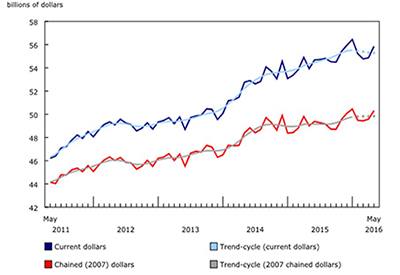The North American Electrical Grid Security

Apr 30, 2018
By Paul Eitmant
I should not be surprised when an old friend, Bill Drake, retired engineering executive from Actuant, brought up the subject of how secure is North America’s electrical grid.
I started to look into it and I was amazed by how this critical topic could affect how we do business today and in the future. What would happen if North America’s electrical grid goes down, and what can be done to protect it?
EMP task force director Peter Pry (Peter Vincent Pry, Task Force on National and Homeland Security) shares insights on ‘Life, Liberty & Levin.’
Yes, Canada is part of the North American grid and the North American grid is divided into three parts, an Eastern grid, a Western grid and a Texas grid, and Canada is part of our grid. Canada is on the same part of our grid. It’s part of the Eastern and Western grid. So, it’s not just the U.S. grid, it includes Canada and they’re all wired together except for Texas, which has got its own independent Texas grid.
Nikola Tesla invented the transformers in this North America. In fact, Tesla in New York, near Niagara Falls, invented all the technology associated with the grid. He built the first grid in the world and we exported the technology all over the world.
Unfortunately, like so many things we don’t make fundamental elements of the electric grid in North America anymore, the transformers aren’t manufactured in the North America anymore, we have to import them from South Korea or Germany.
And if these EHV (extra high voltages) transformers were destroyed, it would basically end us as a civilization. They cannot be mass produced. Each one has to be made individually by hand. The world, the global production…
The worldwide capability to produce EHV transformers is only 200 a year. We have a small number of replacement transformers, less than 1% in reserve, and in part that’s because it’s so difficult to replace them. They weigh so much and they’re so big, there are only three railway cars in the country that can move an EHV transformer. Bridges have to be reinforced, roads have to widen, and that’s assuming that the society is intact and you haven’t lost other parts of the infrastructures, as would be the aftermath of a catastrophic EMP.
Electromagnetic pulse is basically a super energetic radio wave. It’s got so much power that it can destroy electronics across a huge area. In fact, across the entire world in the case of a super storm, a solar super storm, the EMP can be made by nature, by the sun, by a solar super storm or it can be made by man via nuclear weapon, and it can be made by nonnuclear weapons as well.
The Joint United States-Canada Electric Grid Security and Resilience Strategy is a collaborative effort between the federal governments of the United States and Canada and is intended to strengthen the security and resilience of the U.S. and Canadian electric grid from all adversarial, technological, and natural hazards and threats. The strategy addresses the vulnerabilities of the two countries’ respective and shared electric grid infrastructure, not only as an energy security concern, but also for reasons of national security. This joint strategy relies on the existing strong bilateral collaboration between the United States and Canada, and reflects a joint commitment to enhance a shared approach to risk management for the electric grid. It also articulates a common vision of the future electric grid that depends on effective and expanded collaboration among those who own, operate, protect, and rely on the electric grid. Because the electric grid is complex, vital to the functioning of modern society, and dependent on other infrastructure for its function, the United States and Canada developed the strategy under the shared principle that security and resilience require increasingly collaborative efforts and shared approaches to risk management.
The strategy envisions a secure and resilient electric grid that is able to withstand hazards and recover efficiently from disruptions. In pursuit of this goal, the strategy organizes joint approaches to protect today’s electric grid, manage contingencies by enhancing response and recovery capabilities, and cultivate a more secure and resilient future electric grid. As an expression of shared intent and approach, the Strategy organizes joint efforts to manage current and future security challenges.
Three strategic goals underpin the effort to strengthen the security and resilience of the electric grid:
- Protect today’s electric grid and enhance preparedness — a secure and resilient electric grid that protects system assets and critical functions and is able to withstand and recover rapidly from disruptions is a priority for the governments of both the United States and Canada.
- Manage contingencies and enhance response and recovery efforts — the strategy sets out a shared approach for enhancing continuity and response capabilities, supporting mutual aid arrangements such as cyber mutual assistance across a diverse set of stakeholders, understanding interdependencies, and expanding available tools for recovery and rebuilding.
- Build a more secure and resilient future electric grid — the United States and Canada are working to build a more secure and resilient electric grid that is responsive to a variety of threats, hazards, and vulnerabilities. To achieve this, the electric grid will need to be more flexible and agile, with an architecture into which new technologies may be readily incorporated.
I wish there was a magical to do list if this type electrical outage ever happens, but it always wise to put this subject matter on your next team meeting with your managers of your companies. To see what needs to done.Top of Form
Paul Eitmant is President and CEO of IP Group International, which serves the needs of business-to-business enterprises in over 30 countries worldwide by adding specialized expertise to the business planning and implementation process; Tel: 480.488.5646; paulipgroup@cox.net.











